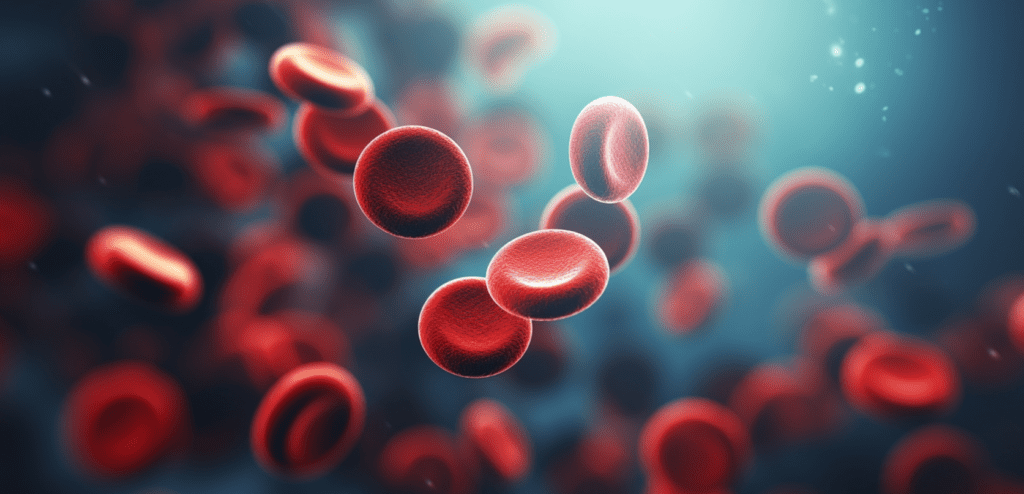The ketogenic diet, or keto diet, has been gaining more followers due to its numerous health and weight loss benefits. Focusing on reducing carbohydrates and increasing the intake of healthy fats, this dietary strategy puts the body into a state called ketosis, where it starts burning fat more efficiently.
Besides promoting rapid weight loss, the ketogenic diet, or keto diet, also helps control diseases like type 2 diabetes and epilepsy and may even improve mental and cognitive health. However, as with any dietary change, it’s essential to understand how it works, its benefits, and its challenges so that you can adopt this lifestyle in a balanced and sustainable way.
Here, we will guide you through each step of the ketogenic diet (keto diet), explaining in a simple and practical way what is keto diet, how to start keto diet, keto diet foods, the effects of the ketogenic diet on your body, whether the ketogenic diet is safe, and how to maintain this new habit healthily and sustainably.

📜Contents
- 1 What is a Ketogenic Diet (Keto Diet)? 🤔
- 2 How Does the Ketogenic Diet (Keto Diet) Work? 📌
- 3 Benefits of the Ketogenic Diet (Keto Diet) ✅
- 4 How to Start the Ketogenic Diet (Keto Diet)? ⚠️
- 5 Allowed and Prohibited Foods in the Ketogenic Diet (Keto Diet) 🥗👀
- 6 Side Effects and Challenges of the Ketogenic Diet (Keto Diet) 🛡️
- 7 Ketogenic Diet and Weight Loss 🎯
- 8 Ketogenic Diet and Physical Performance 🏃♂️
- 9 Risks and Contraindications of the Ketogenic Diet (Keto Diet) 👨⚕️🧬
- 10 How to Sustain the Ketogenic Diet Long-Term 🧠
- 11 Examples of Keto Menus and Recipes 🧮
- 12 Natural Supplement 🍃
- 13 Conclusion 💥
- 14 Also Read – More Posts 💡
What is a Ketogenic Diet (Keto Diet)? 🤔
Definition of the Ketogenic Diet (Keto Diet)
- The ketogenic diet, popularly known as the keto diet, is a dietary approach that aims to drastically reduce carbohydrate intake while increasing fat consumption. The main goal is to lead the body to a metabolic state called ketosis, where it starts using fat as the primary energy source instead of carbohydrates.
How the State of Ketosis Works
Ketosis occurs when carbohydrate intake is so low that the body doesn’t have enough glucose to generate energy. The liver then begins to convert fats into ketone bodies, which are used as fuel by the cells. This state leads to more efficient fat burning, both the fat consumed through food and that stored in the body.
Difference Between the Ketogenic Diet (Keto Diet) and Other Diets
While the ketogenic diet (keto diet) is often compared to other low-carb diets, such as the Atkins diet, the main difference is the fat consumption percentage. While other diets limit carbohydrates, the ketogenic diet prioritizes healthy fats while keeping protein intake moderate and carbohydrates extremely low (usually between 20 to 50 grams per day).

How Does the Ketogenic Diet (Keto Diet) Work? 📌
Reduction of Carbohydrates and Increase of Fats
- The principle of the ketogenic diet is simple: drastically reduce carbohydrates and compensate for this reduction with a considerable increase in healthy fats. This way, the body changes its energy source from glucose to fat, leading to the production of ketone bodies.
Fat-Burning Mechanisms in Ketosis
In the absence of glucose, fat becomes the primary energy source. The cells burn the fat stored in the body, generating ketones used as fuel, promoting more efficient fat loss. This process not only reduces body fat but also improves body composition.
Metabolic and Hormonal Benefits of the Ketogenic Diet (Keto Diet)
The ketogenic diet (keto diet) promotes several metabolic benefits, such as reducing insulin levels, the hormone responsible for fat storage. This facilitates continuous fat burning. Additionally, many followers report improved energy levels and reduced hunger spikes.

Benefits of the Ketogenic Diet (Keto Diet) ✅
Weight Loss and Appetite Control
- One of the most popular reasons for adopting the ketogenic diet (keto diet) is its effectiveness in weight loss. By shifting metabolism to burn fat instead of carbohydrates, many people experience a significant reduction in body weight. Additionally, the fats and proteins consumed promote a sense of satiety, reducing hunger and cravings.
Improved Insulin Sensitivity
The drastic reduction in carbohydrates and the lower production of insulin promote better regulation of blood sugar levels, which is especially beneficial for people with type 2 diabetes or insulin resistance.
Cognitive and Brain Health Benefits
The brain can benefit from the ketogenic diet (keto diet), as ketones are a highly efficient energy source for the brain. Studies show that this diet can help improve memory, concentration, and even have positive effects on neurological conditions like epilepsy.
Control of Diseases Like Type 2 Diabetes and Epilepsy
The ketogenic diet (keto diet) was initially developed as a way to treat epilepsy, especially in children. Moreover, the diet has been widely used for controlling type 2 diabetes, helping regulate glucose levels and improve insulin resistance.

How to Start the Ketogenic Diet (Keto Diet)? ⚠️
Step-by-Step Guide to Starting the Keto Diet
- Starting the ketogenic diet (keto diet) may seem challenging, but the first step is to gradually reduce carbohydrates and increase the consumption of healthy fats. The ideal is to follow a structured meal plan, monitoring your macros (fats, proteins, and carbohydrates) daily.
Keto Diet Foods and Foods to Avoid
Recommended foods include avocados, olive oil, fatty meats, and fish. Foods to avoid include sugars, grains, and refined carbohydrates, which can interfere with ketosis.
Meal Planning and Macronutrients
Planning meals in advance is essential for success in the ketogenic diet. Ensure that fats make up 70-75% of your calories, while proteins are around 20-25%, and carbohydrates are limited to 5-10%.

Allowed and Prohibited Foods in the Ketogenic Diet (Keto Diet) 🥗👀
Foods Rich in Healthy Fats
- Some of the main permitted foods include avocados, coconut oil, nuts, and butter. These foods are rich in good fats, essential for providing energy while the body is in ketosis.
Foods Rich in Moderate Proteins
- The ketogenic diet allows moderate protein intake, such as beef, chicken, eggs, and fatty fish like salmon. Proteins are essential for muscle maintenance but should not be consumed in excess, as they can be converted into glucose.
Foods to Avoid
- In the ketogenic diet, it’s crucial to avoid carbohydrate-rich foods like bread, pasta, sugars, and grains. These foods disrupt ketosis and should be excluded.

Side Effects and Challenges of the Ketogenic Diet (Keto Diet) 🛡️
Symptoms of the “Keto Flu”
- One of the initial challenges of the ketogenic diet is the “Keto Flu,” which may occur in the first days of adaptation. Symptoms include headache, fatigue, irritability, and even dizziness. These effects are the result of metabolic changes when the body begins to burn fat instead of carbohydrates for energy. Fortunately, these symptoms are temporary and can be alleviated with proper hydration, electrolytes (such as sodium and potassium), and rest.
Challenges with Reduced Carbohydrate Intake
For many people, drastically reducing carbohydrates can be a significant challenge since we’re used to consuming high-carb foods like bread, pasta, and sweets. However, in the ketogenic diet (keto diet), it’s important to replace carbs with high-quality fat and protein sources. This change can be difficult at first, but the satiety provided by fats helps reduce carb cravings.
How to Combat Fatigue and Lack of Energy in the Early Days
In the early days of the ketogenic diet (keto diet), it’s common to feel a drop in energy levels as the body is still adapting to using fat as fuel. To combat this fatigue, it’s essential to increase fluid intake and supplement with electrolytes. Additionally, consuming healthy fats at every meal will help keep energy levels stable.

Ketogenic Diet and Weight Loss 🎯
How the Keto Diet Speeds Up Fat Burning
- The ketogenic diet (keto diet) accelerates fat burning by changing the way the body obtains energy. By limiting carbohydrates, the body enters ketosis, a metabolic state where stored fat is converted into ketones, which are used as fuel. This not only helps reduce body fat but also preserves muscle mass, an important factor in keeping metabolism active.
Difference Between Weight Loss in Ketosis and Other Diets
Weight loss in ketosis is different from other diets, such as low-calorie or restrictive diets. In the ketogenic diet, weight loss is more sustainable in the long term, as it keeps insulin levels low, avoiding hunger spikes. Additionally, the body learns to use fat as an energy source efficiently, while other diets may cause muscle loss and slow down metabolism.
Success Stories and Testimonials
Many people who have adopted the keto diet report impressive success stories, both in terms of weight loss and overall health improvement. Testimonials often highlight the feeling of well-being, reduced hunger, and ease in maintaining weight after reaching their goal. Personal transformation stories help motivate new followers to embark on this journey.

Ketogenic Diet and Physical Performance 🏃♂️
Impact on Exercise and Muscle Gain
- The ketogenic diet can impact physical performance, especially for athletes and people who train regularly. Although energy may seem low in the first few days, many report improved performance after the adaptation period. Fat burning becomes more efficient, providing a steady source of energy during endurance exercises. However, muscle gain can be more challenging since protein intake is moderate and carbohydrates are reduced, affecting high-intensity training.
Strategies for Athletes and Active People in Ketosis
For athletes and physically active individuals, the ketogenic diet can be adapted to maximize performance. Some strategies include using targeted carbohydrates before or after exercise (carb cycling), and increasing the intake of healthy proteins and fats to ensure muscle recovery. Additionally, many athletes use ketogenic supplements, such as MCT oils (medium-chain triglycerides), to boost energy production during workouts.

Risks and Contraindications of the Ketogenic Diet (Keto Diet) 👨⚕️🧬
Who Should Avoid the Ketogenic Diet
While the ketogenic diet offers many benefits, it is not suitable for everyone. People with certain health conditions, such as kidney or liver disease, or those with eating disorders, should avoid this diet without a doctor’s supervision. Moreover, pregnant or breastfeeding women should also be cautious, as severe carbohydrate restriction may not be ideal during these periods.
Long-Term Effects and How to Minimize Risks
The long-term effects of the keto diet are still being studied, but there are concerns about the impact carbohydrate restriction may have on cardiovascular health and liver function. To minimize risks, it’s important to follow the diet with balance, focusing on the consumption of healthy fats and essential nutrients. Regular medical check-ups are also key to ensuring the diet is providing benefits without harming your health.

How to Sustain the Ketogenic Diet Long-Term 🧠
Tips for Sustainability and Balance
- Maintaining the ketogenic diet long-term can be challenging, especially due to the strict carbohydrate restriction. However, with proper planning and some adjustments, it is possible to follow the diet sustainably. Prioritizing high-quality foods, such as low-carb vegetables, lean proteins, and healthy fats, is essential. It’s also helpful to learn how to prepare practical meals that meet ketogenic guidelines, making day-to-day life easier.
How to Avoid Slips and Stay in Ketosis
Avoiding slips requires planning and discipline. Having low-carb snacks on hand and learning to handle social events (where carbohydrate-rich foods are common) is crucial. One tip is to always look for alternatives, such as keto snacks or low-carb meals available at restaurants. Additionally, it’s important to remember that an occasional slip shouldn’t be a reason to abandon the diet – the focus should always be on quickly returning to ketosis.
Planning for Social Outings and Events
Maintaining the ketogenic diet during social events can be challenging but not impossible. A good strategy is to plan ahead, opting to bring your own snack or choosing dishes that fit the diet (such as salads, grilled meats, cheeses, and low-carb vegetables). Many restaurants offer low-carb options or can adapt dishes, as long as you know what to ask for.

Examples of Keto Menus and Recipes 🧮
Quick and Practical Recipes for Everyday Life
- To make daily life easier, it’s important to have a ketogenic menu on hand with simple and quick recipes. Some examples include scrambled eggs with avocado and olive oil, grilled salmon with vegetables sautéed in butter, and low-carb smoothies made with almond milk, coconut oil, and berries.
Suggestions for Breakfast, Lunch, and Dinner
- Breakfast: Omelet with cheese and bacon, or natural yogurt with nuts.
- Lunch: Grilled chicken with garlic and olive oil broccoli, or a beef burger without the bun, served with salad.
- Dinner: Grilled fish fillet with sautéed zucchini, or roasted pork ribs with avocado and lettuce.
Low-Carb Snacks to Maintain Ketosis
Throughout the day, it’s common to feel hungry between main meals. For this, options like nuts, cheese, cucumbers with guacamole, or even store-bought keto snacks can help maintain ketosis and avoid carb temptations.

Natural Supplement 🍃
Using natural supplements is an excellent way to complement the treatment and promote balanced health. These products provide essential nutrients that are often difficult to obtain solely through diet. Nagano Tonic, for example, is a standout natural supplement due to its potent and innovative formula. Unlike other options, it directly targets a dormant metabolism, helping accelerate fat loss, increase energy levels, and provide a renewed sense of youth.
Conclusion 💥
Well, in this complete article we covered what a ketogenic diet is, how to start a ketogenic diet, whether a ketogenic diet is safe, ketogenic diet plans, among other topics…
The ketogenic diet (keto diet) offers a powerful approach for those looking to lose weight effectively and improve metabolic health. By putting the body into ketosis, you not only accelerate fat burning but also experience greater satiety and benefits for both mind and body. However, as with any dietary change, it’s important to adapt patiently and know your limits.
Facing challenges like the “keto flu” and carbohydrate restriction may seem tough at first, but with the right planning and proper food choices, the diet becomes easier to follow. Remember that balance and consistency are key to reaping the benefits of the ketogenic diet long-term, and adapting this strategy to your routine can significantly transform your health and well-being.
Also Read – More Posts 💡






[…] Ketogenic Diet: What It Is, How It Works, Benefits, Risks… ✅ […]